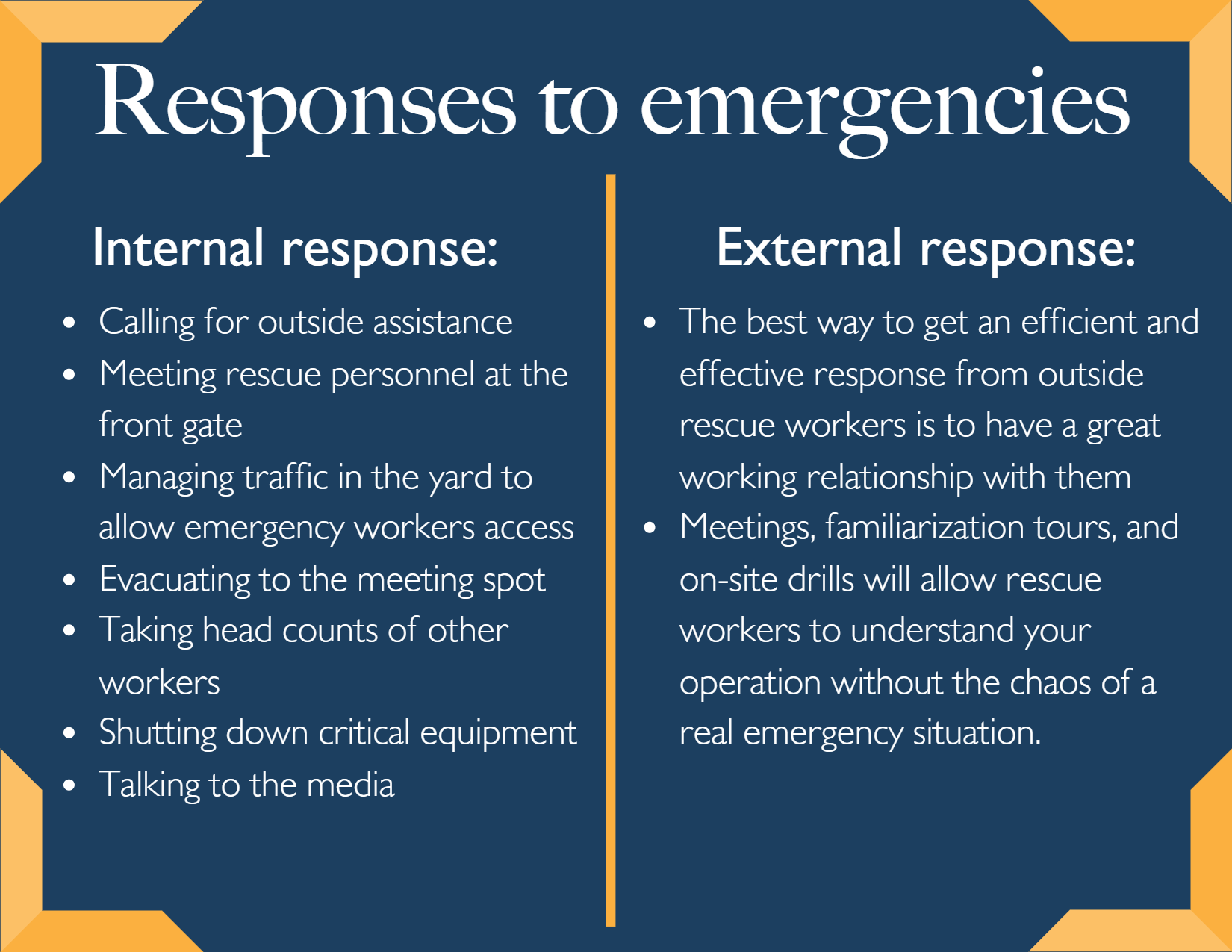The actions taken in the initial minutes of an emergency are critical. A prompt warning to employees to evacuate, shelter or lockdown can save lives. A call for help to public emergency services that provides full and accurate information will help the dispatcher send the right responders and equipment. An employee trained to administer first aid or perform CPR can be lifesaving. Action by employees with knowledge of building and process systems can help control a leak and minimize damage to the facility and the environment.
The first step when developing an emergency response plan is to conduct a risk assessment to identify potential emergency scenarios. An understanding of what can happen will enable you to determine resource requirements and develop plans and procedures to prepare your business. The emergency plan should be consistent with your performance objectives.
When an emergency occurs, the first priority is always life safety. The second priority is the stabilization of the incident. There are many actions that can be taken to stabilize an incident and minimize potential damage. First aid and CPR by trained employees can save lives. The use of fire extinguishers by trained employees can extinguish a small fire. Containment of a small chemical spill and supervision of building utilities and systems can minimize damage to a building and help prevent environmental damage.
Some severe weather events can be forecast hours before they arrive, providing valuable time to protect a facility. A plan should be established and resources should be on hand, or quickly, available to prepare a facility. The plan should also include a process for damage assessment, salvage, protection of undamaged property and clean-up following an incident. These actions to minimize further damage and business disruption are examples of property conservation.
